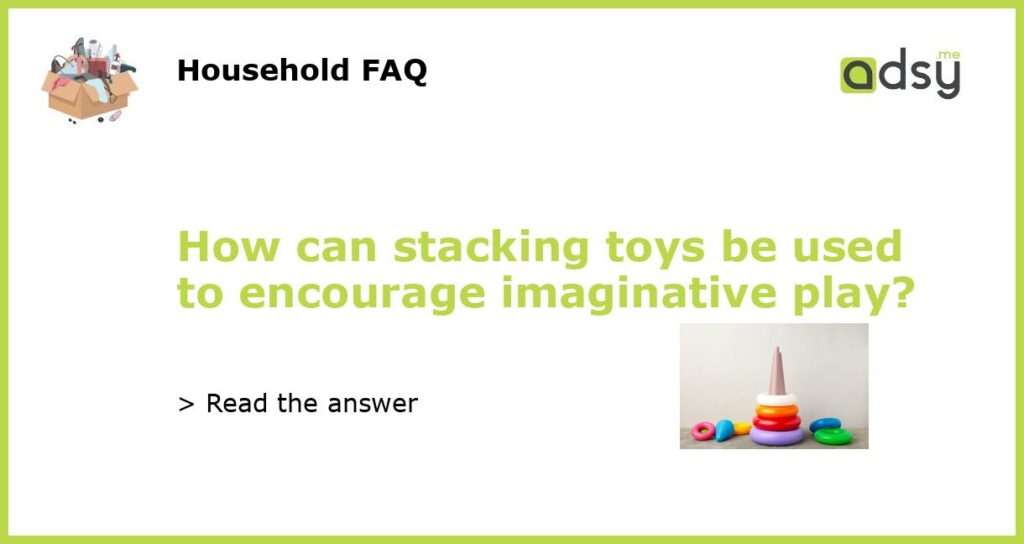The Benefits of Imaginative Play
Imaginative play, also known as pretend play or make-believe play, is an essential part of childhood development. It allows children to explore and understand the world around them, develop their problem-solving skills, expand their creativity and imagination, and engage in social interactions. By encouraging imaginative play, parents and caregivers can help children develop crucial cognitive, emotional, and social skills.
What are Stacking Toys?
Stacking toys are educational toys designed to enhance a child’s fine motor skills, hand-eye coordination, and problem-solving abilities. These toys typically consist of colorful blocks or rings that can be stacked on top of each other. Stacking toys come in various shapes, sizes, and materials, allowing children to experiment with different combinations and structures.
Promoting Imaginative Play with Stacking Toys
Stacking toys can be a great tool for promoting and enhancing imaginative play in children. Here are a few ways they can be used:
3.1 Building Structures
Stacking toys provide children with the opportunity to build different structures, such as towers, houses, or bridges. By experimenting with different combinations, children can use their imagination to create their own worlds, stories, and scenarios. They can pretend to be architects, construction workers, or even superheroes saving the day.
3.2 Role-Playing and Storytelling
Stacking toys can also be used as props for role-playing and storytelling. Children can assign different roles to the blocks, such as characters in a play or members of a community. They can create narratives, act out scenes, and engage in cooperative play with other children. This helps them develop their language skills, empathy, and social awareness.
3.3 Imaginative Stacking Challenges
Parents or caregivers can create imaginative stacking challenges for children to solve. For example, they can ask the child to build a tower using only certain colors, or to create a structure that represents a specific theme (e.g., a zoo or a spaceship). This encourages children to think creatively, come up with solutions, and think critically.
Other Ways to Encourage Imaginative Play
While stacking toys can be an excellent tool for encouraging imaginative play, there are other methods that parents and caregivers can use to foster a child’s creativity and imagination:
4.1 Providing Open-Ended Toys
Open-ended toys, such as blocks, dolls, or playdough, allow children to use their imagination to create and explore. These toys have no set rules or outcomes, enabling children to develop their own narratives and play scenarios.
4.2 Role-Modeling Imaginative Play
Parents and caregivers can actively engage in imaginative play themselves and encourage children to join in. By role-modeling imaginative play, children can see firsthand how to use their imagination and creativity to explore new ideas and experiences.
4.3 Limiting Screen Time
Excessive screen time can hinder imaginative play. By limiting the amount of time children spend in front of screens, they are encouraged to engage in other forms of play that require creativity and imagination.
Conclusion
Stacking toys can serve as valuable tools for encouraging imaginative play in children. By providing opportunities for building structures, role-playing, and imaginative challenges, stacking toys help children explore their creativity, problem-solving skills, and social interactions. Combined with other strategies, such as providing open-ended toys and limiting screen time, parents and caregivers can create an environment that fosters the development of a child’s imagination and cognitive abilities.






